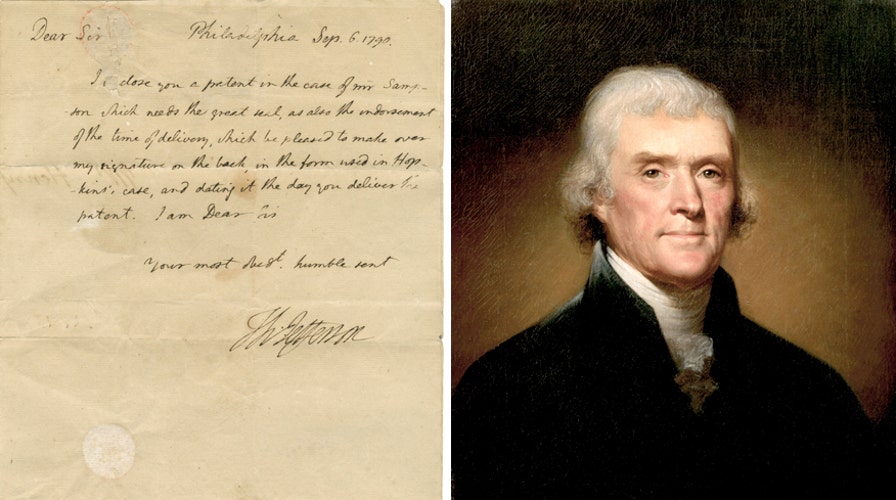Previously unknown Thomas Jefferson letter surfaces
Fox News Flash top headlines for March 10
Fox News Flash top headlines are here. Check out what's clicking on Foxnews.com.
A previously unknown letter by Thomas Jefferson has surfaced, offering a glimpse into the Founding Father’s desire to drive innovation.
The letter was written in September 1790 when Jefferson was secretary of state and part of a three-person board to assess new inventions. Written to his chief aide, the letter mentions the first two inventions “blessed and patented by the new U.S. government,” according to the Raab Collection, which is selling the letter.
NEWLY DISCOVERED DOCUMENTS REVEAL PATRIOT PASTOR'S TRAGIC TALE, REVOLUTIONARY WAR JEWISH PERSECUTION
The inventions were, respectively, related to the manufacture of potash and candles. Valued at $50,000, the letter has been in the private collection for nearly a century, where it was stored in the basement of an East Coast family home, according to the rare documents dealer.

The letter was written by Thomas Jefferson while he was serving as Secretary of State. (Raab Collection)
The announcement of the Jefferson letter coincides with the launch of the book “The Hunt for History,” by Raab Collection President Nathan Raab.
“This discovery highlights how the hunt continues every day and why I wanted to write this book,” he said, in a blog post. “It also shows us that the founders understood the importance of protecting innovation and invention and how they did it. I have never seen another such letter of Jefferson, let alone one that is new to scholars. I continue to be inspired by the hard work and vision of the men and women who came before us.”
CLICK HERE TO GET THE FOX NEWS APP

Painting of Thomas Jefferson by Rembrandt Peale, from 1800. The oil on canvas painting is located in the White House, Washington, DC, USA. (Photo by VCG Wilson/Corbis via Getty Images)
Earlier this year the Raab Collection revealed documents that were recovered from the drowned body of a patriot pastor that shed light on the fight for religious freedom during the Revolutionary War.
Follow James Rogers on Twitter @jamesjrogers




















